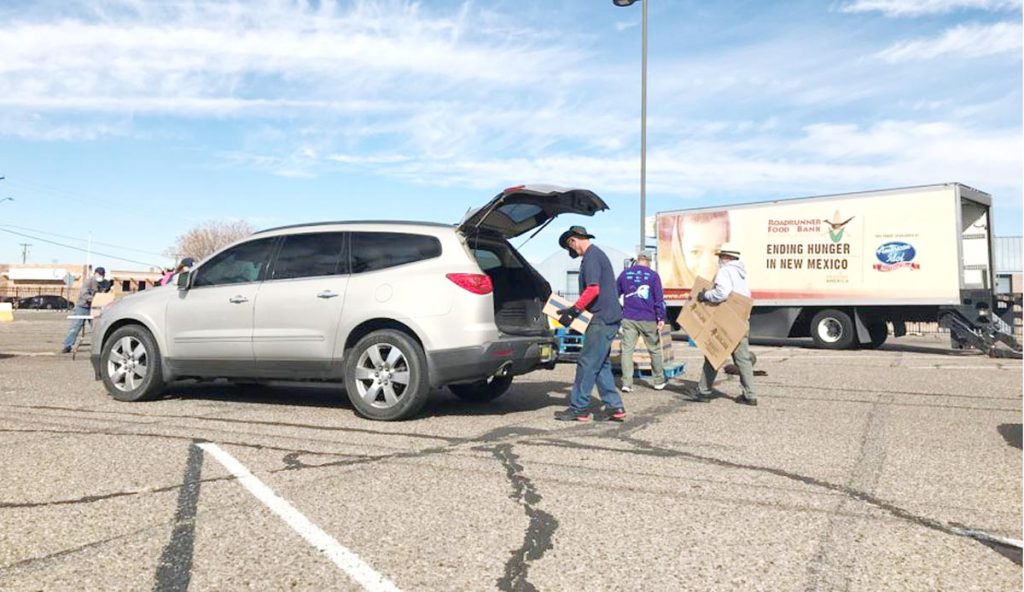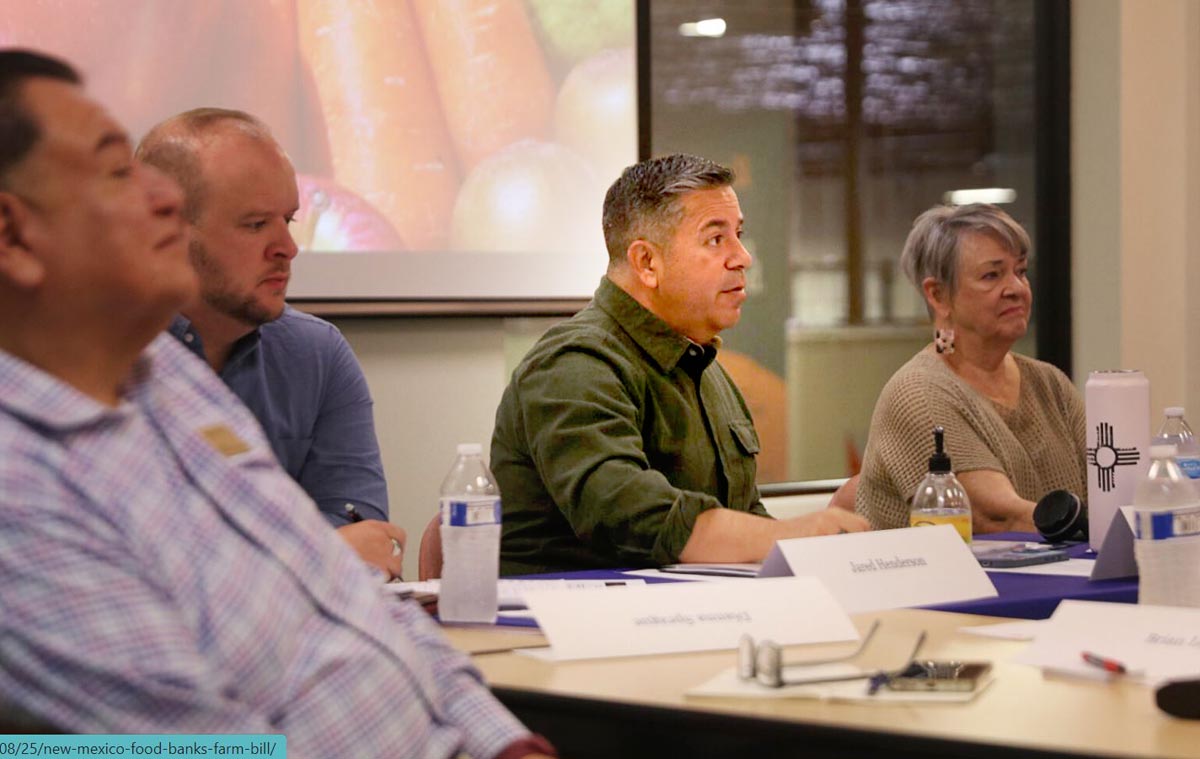New Mexico food banks weigh in on Farm Bill during roundtable
New Mexico food banks and hunger relief nonprofits urged Sen. Ben Ray Luján to prevent congressional cuts to federal food programs and increase support.
Seated before a window overlooking the warehouse floor of the Roadrunner Food Bank on Thursday, Luján sat down with food bank officials, to hear suggestions on the upcoming federal Farm Bill.
Linda Wedeen, the interim president and CEO at Roadrunner Food Bank, gestured to food stacked in massive boxes piled towards the ceiling, shifted in the warehouse by forklift outside the window.
“It always amazes me, looking out at that warehouse, it’s so full, it’s so great, look at all that food — it doesn’t even come close to feeding the amount of people we need to feed,” Wedeen said.
Potential food fight on Farm Bill
The Farm Bill is a piece of legislation rewritten every five years, which includes hundreds of billions of dollars of spending on forestry, rural development, agriculture safety net and federal food assistance programs.
During negotiations for the debt ceiling, House Republicans added additional work requirements for many food stamp recipients.
The 2023 Farm Bill will be under a tight deadline when Congress returns for the session in September, as the bill expires September 30. This is the same timeframe many of the funding bills are hitting the floors.
With all the bills competing for floor time, there’s an expectation that some of the upcoming deadlines are extended through the end of the year, said Jared Henderson, the senior policy advisor for Luján.
The Supplemental Nutrition Assistance Program (SNAP), also called food stamps, could become central to the debate on the House side.
The Emergency Food Assistance Program (TEFAP) provides food banks with funding. New Mexico just received nearly $1 million to expand mobile distribution options.
The fight over SNAP on the debt limit is “going to shape the progress that the House is going to be able to make on the Farm Bill,” Henderson said.
Luján is a member of the Senate Agriculture, Nutrition and Forestry Committee. He said he is committed to keeping federal food aid programs funded.
“I’m optimistic this will get done,” he said about the Farm Bill during the roundtable.

Pandemic pressures continue
The pandemic isn’t over, said Sherry Hooper, the executive director for the Food Depot, a food bank which services most of northern New Mexico. She said food banks were seeing four times the demand pre-pandemic — which was already rising.
“Food banks in New Mexico and across the country are continuing to see pandemic level lines,” she said. “In many ways the pandemic has not gone away, but the extra benefits have.”
Those extra benefits included increased SNAP payments. In fiscal year 2021, about 25% of the state population used SNAP, more than 500,000 New Mexicans.
The New Mexico Legislative Finance Committee noted that increasing food prices are burdening SNAP recipients. Food prices, according to the U.S. Department of Agriculture, increased by 9.9 percent in 2022.
SNAP minimum monthly payments are $23 for one-to-two person households. The average SNAP user receives less than $90 per month according to a Center on Budget and Policy Priorities report.
During the pandemic, those funds increased tenfold, with minimum payments in the $280 range, said Jason Riggs, the community initiatives manager for Roadrunner Food Bank.
In March, those benefits ended. But the need hasn’t.
Especially in rural portions of the state, where the distance to grocery stores grows, food banks and pantries are primary sources of getting food, Hooper told the roundtable. This increases budgets at food banks to acquire more food, store the food, and transfer food to meet the need.
Alice Perez, who heads the Gallup Community Pantry, said four grocery stores feed nearly 100,000 people.
“We’re right back to where we started, with the SNAP benefits going away,” Perez said. “We have families of four living on $200 a month in groceries, where there’s no grocery stores.”


